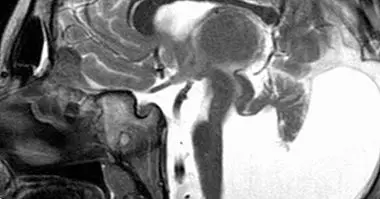Crovitz technique: what it is and how it is used in mental health
One of the methods that can be used to evaluate autobiographical memory, and therefore retrograde amnesia, is the Crovitz technique, based on the free association of words used by pioneers of psychology like Galton and Jung. In this article we will analyze the Crovitz method and the relationship between age and autobiographical memory.
- Related article: "Types of memory: how memory stores the human brain?"
What is the Crovitz technique? What does it consist of?
The Crovitz technique is a psychological test that is used to evaluate autobiographical memory , mainly in people with some type of dementia. It was developed by Herbert F. Crovitz and Harold Schiffman in 1974; the authors relied on the free word association method, which had been created by Francis Galton and popularized by Carl Jung.
This simple test consists of presenting the subject of evaluation with a series of words. The person will have to tell a personal memory at any time of his life that associates the word stimulus. Although it is complicated to carry out quantitative evaluations of the results, these can be useful to analyze autobiographical memory in broad strokes.
The number and characteristics of the memories of the subject are compared with those of their normative group in order to detect signs of cognitive deterioration, or to discard them. In this sense, it is important to bear in mind that the quality of the memory varies according to the age at which a memory was encoded concrete; we will talk about this below.
Although many experts defend the consistency of this technique, several studies have warned about the weaknesses of the Crovitz technique. Beyond the difficulties related to the quantification of results, it is known that certain types of words favor the recovery of memories with emotional content or specific periods.
- You may be interested: "What are false memories and why do we suffer them?"
Developments of the Crovitz technique
Different authors have reconceptualized or perfected the technique created by Crovitz and Schiffman . For example, Robinson updated the method by specifying two instructions: "Think of an experience of your own life that this word reminds you of" and "Keep thinking until you remember a particular event associated with the word."
For her part, Karis carried out a procedure in which she instructed the subjects to write any memories that came to mind when they read the word stimulus, specifying that they could be very specific ("like having broken a window one day in particular ") or general (" how to wash the windows every Saturday morning ").
Memory based on the coding age
Usually people remember well the events that have happened recently. The quality of memories diminishes very markedly as we go back in the last year of life, more or less; the memory for the previous events worsens more slowly from this point.
Consequently, when it is represented graphically the memory curve according to the coding age we observe a sharp drop in the last months of life that finally takes the form of asymptote. However, certain factors have obvious effects on the normal functioning of autobiographical memory.
So, the Crovitz technique and other similar methods can be useful to evaluate the presence of retrograde amnesia , which is defined as a great difficulty to remember events that took place before a certain brain injury, such as those that are typical of Korsakoff's syndrome and dementias, especially Alzheimer's.
Another striking fact is that elderly people, especially those with signs of cognitive impairment, recall biographical events that occurred when they were between 10 and 30 years old, approximately, compared to those that occurred in later years. This period has been called "peak of reminiscence" .
- You may be interested: "The different types of amnesia (and their characteristics)"
History of the word association method
Francis Galton, considered one of the pioneers of statistics (and a strong advocate of controversial eugenic ideas), developed in the late nineteenth century a technique of psychological evaluation consisting of presenting words to a subject; then he verbalized one or two ideas related to the terms given by the evaluator.
Although Galton did not use the word association specifically to evaluate autobiographical memory, other authors adopted it for this purpose and for other purposes. The application made by the psychoanalyst Carl Jung is especially famous as a method of analysis of the unconscious, inspired by Freud's free association (or "fundamental rule").
The association of words has been used by psychologists belonging to very different branches of our science. Thus, in addition to the clinical uses that we have described, this method has received some attention from market researchers since it can help to evaluate the reactions of consumers to slogans, brand names, etc.
Bibliographic references:
- Crovitz, H. F. & Schiffman, H. (1974). Frequency of episodic memories as a function of their age. Bulletin of the Psychonomic Society, 4 (5): 517-518.
- Rubin, D.C. (1986). Autobiographical Memory. Cambridge, United Kingdom: Cambridge University Press.



















